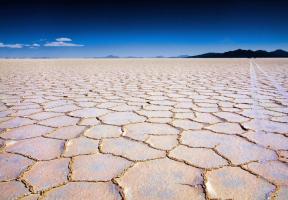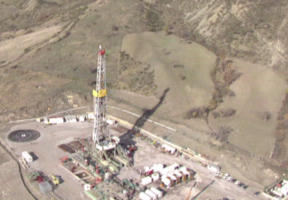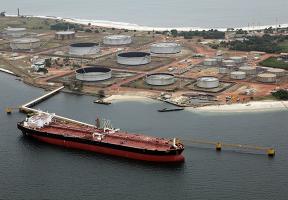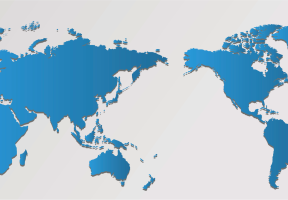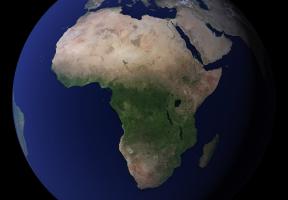Transporting Oil by Sea
10 min read
Oil shipping accounts for nearly a third of global maritime trade. The capacity of the world’s fleet of tankers, the ships that transport and petroleum products, has increased by 73% since 2000. They travel the world's major shipping lanes, passing through strategic locations such as the Strait of Hormuz, the Strait of Malacca, and the Suez and Panama Canals.

© Gonzalez Thierry TOTAL SE - COMMUNICATION EP - Oil being offloaded onto a tanker from a giant FPSO offshore Angola.
Maritime Shipping, the Preferred Means of Transportation
Huge quantities of crude oil and refined petroleum products are transported by ship between production sites, refineries and points of consumption. For many years, oil shipments have accounted for about 30% of global maritime trade. In 2011, they accounted for the bulk of the traffic handled by French ports, representing more than 40% of total tonnage.
According to the United Nations Conference on Trade and Development (UNCTAD), shipments of crude oil totaled 1.78 billion tons in 2012, while shipments of refined products and liquefied gas amounted to 1.05 billion tons (of which approximately 230 million tons of LNG).1
Crude oil continues to account for the lion’s share of maritime trade, but shipments of refined products have been rising steadily in recent years. While the volume of crude oil has remained practically flat since 2006, the tonnage of refined products and gas has increased by 15%. This trend is expected to continue throughout the decade2 as a result of profound changes in the refining industry, including the construction of mega refineries in oil-producing countries (particularly in the Gulf region), the development of new export capacity in the United States and growing demand in emerging markets. At the same time, continued growth in LNG shipments is projected to further weaken oil’s dominant position.
Tankers and Supertankers
The oil is transported on purpose-built ships called tankers, which are classified by their deadweight tonnage (dwt). In 2013, the global fleet comprised about 11,000 tankers, for a total deadweight tonnage of 490 million. Between 2000 and 2013, overall capacity soared by 73%.
Ultra large crude carriers (ULCCs) are ships with a deadweight tonnage of 300,000 to 500,000 and a length of over 400 meters. They fell out of use after the 1973 oil embargo, and most of the 100 or so built have been broken up or converted for other purposes.
Today’s fleets consist of very large crude carriers (VLCCs), which have a maximum deadweight tonnage of 300,000; Suezmax tankers, which have a maximum deadweight tonnage of 200,000; and Aframax tankers, which have a deadweight tonnage of 80,000 to 120,000.
The size of a ship is determined by the canals and straits through which it travels. A Panamax tanker, for example, cannot exceed 32 meters in width or 80,000 deadweight tonnage in weight. A Malaccamax tanker can have a deadweight tonnage of up to 300,000, but its draft is limited to 20 meters.
Oil Routes and Strategic Straits
The most commonly used crude oil shipping routes originate in the Middle East. They pass through the Bab-el-Mandeb Strait, which separates Djibouti in Africa from Yemen in the Arabian Peninsula, or the Strait of Hormuz, the world’s main oil shipping lane, which separates the United Arab Emirates and Oman from Iran. After this, during trips that last two weeks to a month, the tankers travel to:
- The United States and the rest of North and South America via the Cape of Good Hope.
- Asia via the Strait of Malacca between Sumatra and Malaysia.
- Europe via the Suez Canal or, if they are too wide, via the Cape of Good Hope, then on to Northern Europe via the Strait of Dover.2
The amount of oil transiting through the Panama Canal, which celebrated its 100th anniversary in August 2014, has increased considerably due to growing demand in Asia. A project to widen the canal to 55 meters was begun in 2007. Barring unexpected circumstances, the expansion is scheduled to open in 2016. In August 2014, Egypt too announced plans to double the capacity of the Suez Canal, though the financing terms have yet to be finalized. Nicaragua, with the assistance of a Chinese company, is also planning to build a canal connecting the Pacific Ocean and the Caribbean Sea that would be fully operational in 2020. And, who knows, maybe the melting ice pack will open up two new routes via the Arctic.
Oil shipping costs are referred to as charter costs and vary according to demand. Costs can double depending on the time of year for the same voyage and the same tanker. They account for 5 to 10% of oil’s value added.
Sources:




